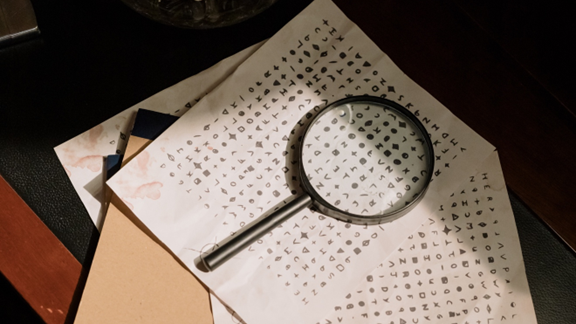Amyotrophic lateral sclerosis and frontotemporal dementia are devastating neurological diseases. Yet, there is no effective treatment for them. We uncovered a genetic cause of these diseases leading to a cryptic process in neurons caused by a malfunctioning protein. Our finding might help provide a potential new therapy for such neurological diseases.
While humans are 99.999% the same at the DNA level, there are small variations in our DNAs known as alleles. Most differences in our alleles are harmless, but some alleles make us more susceptible to get diseases like cancer or dementia. Understanding how these alleles lead to disease can reveal treatments or cures.
Many disease risk alleles lead to changes in protein sequences, but the
UNC13A allele that increases risk for
amyotrophic lateral sclerosis (ALS) and
fronto-temporal dementia (FTD), doesn’t affect UNC13A protein sequence at all. How does this allele lead to disease if it’s not even affecting the protein? The answer to that question lies in the cryptic function of another protein entirely, TDP-43.
TDP-43 is a protein which normally found in the nucleus of cells where the DNA is stored. But when people have either ALS or FTD, TDP-43 starts to form sticky blobs and gets trapped outside of the nucleus in neurons. When TDP-43 can’t make it back inside the nucleus, it’s unable to take part in its role as a regulator of an important process known as RNA splicing.
While all the information for building proteins is stored in the information on DNA, proteins are built using RNA as a template. Let’s pretend that DNA is a string of letters that you’re going to use to send a message to a restaurant about what you’d like to order for lunch. This is what you start with:
ILFMSWANTFLKDOORKNOBJALKAFANCLSECHEESESLKNCEIBURGERMCIESPIZZALAFX.
Fortunately, DNA has signals for where the actual words are that you might want to include in the RNA message:
I*LFMS*WANT*FLKDOORKNOBJ*A*LKAFANCLSE*CHEESE*SLKNCEI*BURGER*MCIES*PIZZA*LAFX.
The bits of RNA in the final message for building a protein are called exons. The same DNA message with various exons can be recombined into RNA messages that have different meanings as in “I WANT A CHEESE BURGER” or “I WANT PIZZA”. This is what is amazing about RNA splicing. It allows the cells to use the same DNA template to create different RNA messages by selecting different parts, which in turn get translated into different functional proteins.
But sometimes throughout evolution due to random mutations, a signal for a nonsense exon might sneak in by accident:
I*LFMS*WANT*FLK*DOORKNOB*J*A*LKAFANCLSE*CHEESE*SLKNCEI*BURGER*MCIES*PIZZA*LAFX.
These nonsense words are called “cryptic exons” because they’re usually hidden - at least until TDP-43 malfunctions. One of TDP-43’s jobs is to stick to newly built RNA during the process of exon selection around the area of those nonsense exons and make sure that during RNA splicing cells don’t accidentally send a message like:
I WANT DOORKNOB BURGER
When TDP-43 is trapped outside the nucleus, as what happens in the neurons of people with ALS/FTD, it can’t bind to the RNA and neurons start producing DOORKNOB BURGER RNA messages, which are usually thrown away by the cells.
Unpleasant lunches aside, what does all this have to do with an ALS/FTD risk allele in UNC13A? To find out, we removed TDP-43 protein from neurons and looked at all RNA messages produced. We found 179 different genes had a cryptic exon after removing TDP-43, including a cryptic exon in UNC13A. UNC13A makes a protein involved in intra-neuronal communication, and when the cryptic exon is included in the RNA message, the level of this crucial protein goes way down.
Even more provocatively, the UNC13A disease allele was in the DNA in the same place as the cryptic exon. When we looked at the expression of this cryptic exon in tissues of people who had died of ALS or FTD, we found that those with the risk alleles had higher expression of the incorrect UNC13A RNA compared to those with healthy alleles.
TDP-43 binds UNC13A just around the cryptic exon and the disease allele, so what does the disease allele do to its binding? Excitingly, we found that when the disease risk allele was present, TDP-43 binding was shifted away from the cryptic exon on the RNA. This explains why the allele leads to disease. When the disease allele is present it’s easier for the cryptic exon to escape TDP-43 repression, meaning less functional UNC13A with less TDP-43 pathology.
While there are hundreds of genes with cryptic splicing, only one of them has been tied genetically to ALS/FTD before, which suggests that the failure in UNC13A is important for disease progression. Right now, we are working on stopping this cryptic exon from being included, with the hope that one day we could help provide treatment to slow disease progression and give valuable time to people afflicted by ALS or FTD.
Original Article:
Brown, A.-L., Wilkins, O. G., Keuss, M. J., Hill, S. E., Zanovello, M., Lee, W. C., Bampton, A., Lee, F. C. Y., Masino, L., Qi, Y. A., Bryce-Smith, S., Gatt, A., Hallegger, M., Fagegaltier, D., Phatnani, H., Phatnani, H., Kwan, J., Sareen, D., Broach, J. R., … Fratta, P. (2022). TDP-43 loss and ALS-risk SNPs drive mis-splicing and depletion of UNC13A. Nature, 603(7899), 131–137. https://doi.org/10.1038/s41586-022-04436-3
 Neurobiology
Neurobiology



